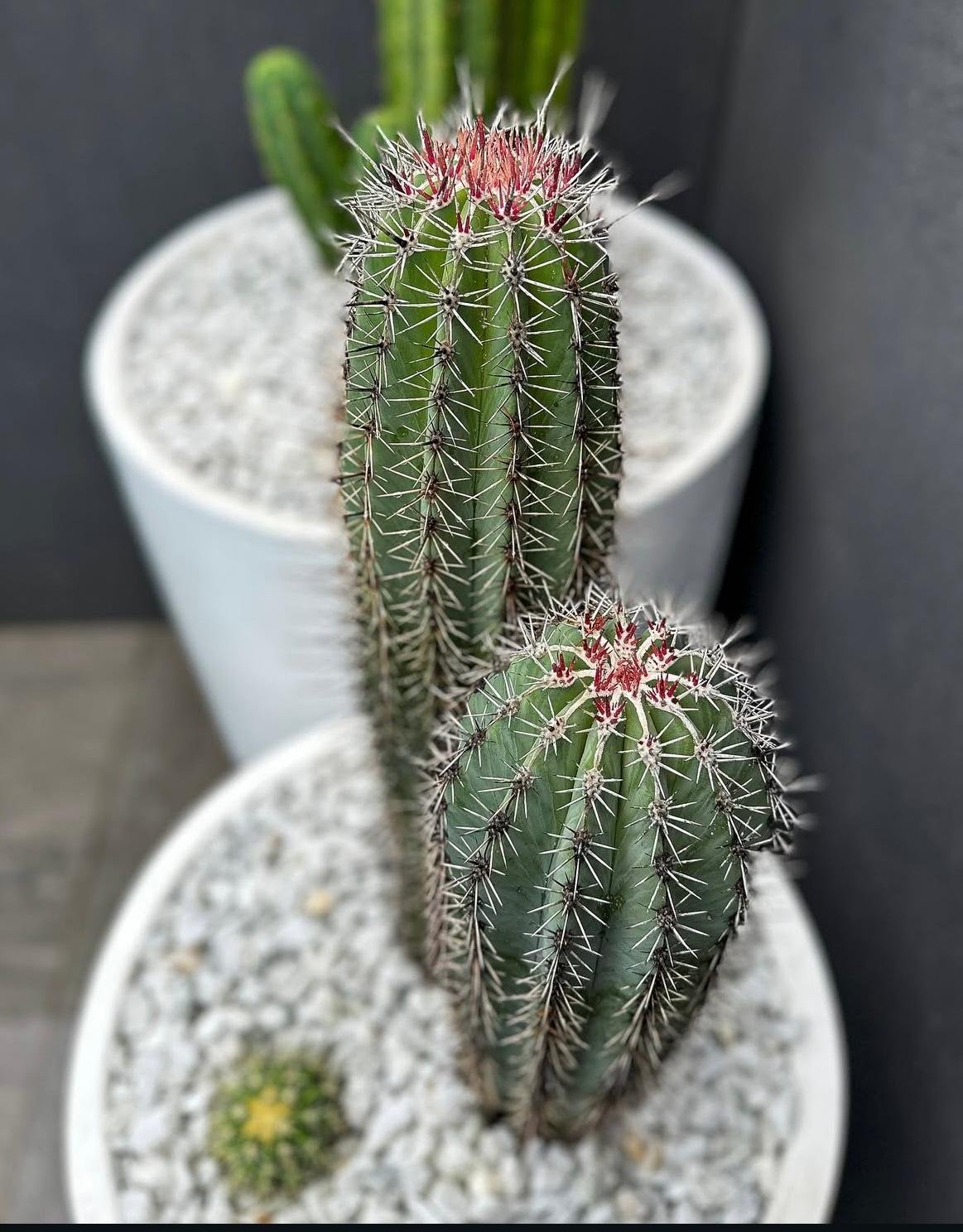Burbank Prickly Pear, Spineless
BOTANICAL NAME
Opuntia (Genus)
ORIGIN
Occurred in cultivation, in Northern America
WATER
Water when soil is almost dry from spring to early autumn, seldom in winter
OUTDOORS
I can adjust to full day sun, I’d prefer morning sun or half day sun, so my colour stays vibrant and so I don’t get burnt.
INDOORS
Not recommended
FROST TOLERANT
Moderate tolerance
GROWTH RATE
Moderate
POPULARITY
Rare
FLOWERS
Annual flowers and fruit once mature
PETS & CHILDREN
Low risk to children and pets
CONCACTUS FOR ALL INQUIRIES REGARDING PLANTS “UNAVAILABLE” ONLINE
Ready to spike up your space? Our products come in plastic pots, but fear not!
Get in touch post-purchase and we'll pot-ify your cactus for maximum appeal.
*IMAGES ARE CV STOCK EXAMPLES
The Opuntia Burbank, also known as the "Spineless Prickly Pear" is a variety of Prickly Pear that was formed when the Mexican Prickly Pear (Opuntia Tuna) and the Indian Fig (Opuntia Ficus-Indica) were cross-pollinated by the famous hybridizer, Luther Burbank, in the early 1900s. This Californian hybrid is celebrated for its high nutritional value, lack of spines and its many uses, from food colouring and natural dye to candle-making. Luther Burbank is famous for introducing more than 60 varieties of spineless cacti that could be fed to livestock and cooked for human consumption. The Opuntia Burbank in particular grows splendidly across coastal and inland areas of Australia.
Cactus Vision reminds you that some varieties of Prickly Pear are prohibited in the country for trade, but thanks to a successful biological control program, this variety is safe and permitted to share and own, here in NSW.
Like most of our followers, our team is obsessed with this species of prickly pear. The Spineless Burbank is the most attractive version of the prickly pear (in our humble opinion). They offer little difficulty to handle compared to their relatives, as mature paddles commonly lose their spines. Each round paddle stands 40-45cm tall when mature and showcases a gorgeous pale blue or greyish green skin. The more sun they are exposed to, the greener they become.
In the ground, these cacti will grow as big as you let them, expect to see 3-6 paddles form each growing season (Spring-Summer). Pruning is easy to do yourself with a sharp serrated knife or saw. Young paddles are not frost-hardy, cover them in prolonged periods of frost. Older paddles however can become cold-hardy, adapting to colder climates over time.
Although many understand that the Burbank Prickly Pear requires little maintenance, it is important to note that their skin can suffer from sunburn in warmer months, in full-day sun. This damage is completely cosmetic in most cases, however easily avoidable with adequate watering - contact us for care tips


































